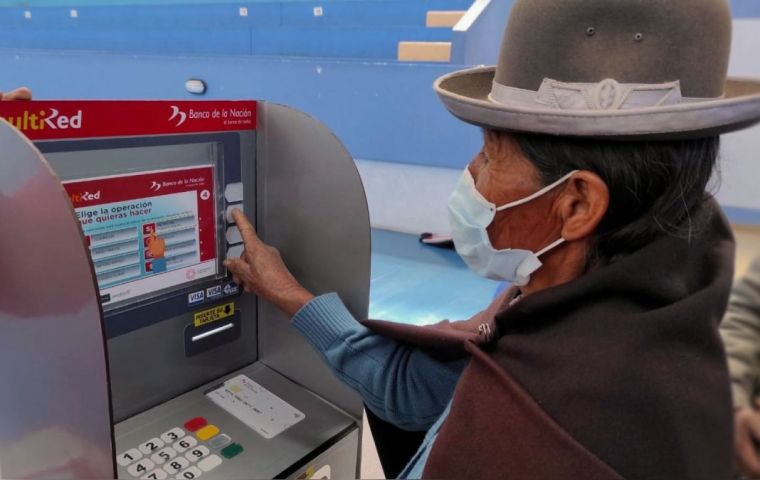MercoPress. South Atlantic News Agency
Despite political chaos, Peruvian economy remains strong based on an independent central bank
 Inflation is among the lowest in the region and international reserves the highest in relation to the size of the Peruvian
Inflation is among the lowest in the region and international reserves the highest in relation to the size of the Peruvian When Peruvian president Dina Boluarte took office becoming the sixth head of state in four years, world media pointed out to the mineral rich South American country as an example of instability and total political chaos. This however is not necessarily true since Peru has one of the most stable and sustainedly growing economies in the region.
How come? Under the Peruvian constitution the Central and Reserve Bank of Peru is totally independent and has been under the strong steering of the same economist for the last sixteen years, Julio Emilio Velarde Flores. Inflation is among the lowest in the region and international reserves the highest in relation to the size of the Peruvian economy.
Peruvian presidents and political turmoil have come and gone, but the economy has been expanding for the last three decades. Velarde has been chair of the Central bank since 2006, but previously a member of the bank's board in the nineties and following decade. Last year when the currently imprisoned ex president Pedro Castillo, a Marxist, took office in 2021, on demand from the business sector, Castillo again ratified Velarde's job for another five years.
The fact is that despite the political upheaval the Peruvian economy is set to grow 3% this year and 2,9% in 2023. Annual inflation stands at 8,2%, and has been one digit since 1997, compare this with the plus 100% of Argentina, while international reserves total US$ 74 billion, highest in the region compared to the size of the economy.
In effect, according to international media, Velarte admits having had no major differences with the Executive and said “the autonomy of the Central Bank in Peru is well guaranteed”. Quiet a difference from what has happened, for example, with the Federal Reserve in the US or the Bank of England.
Another reason for the orthodox emphasis of the Peruvian central bank approach, similarly to Uruguay, is that trading in hard currency, mainly US dollars, is entirely legal, so is having US dollar deposits in any Peruvian bank, with no need to have special controls on possible capitals fleeing the country during political stress moments.
But despite the solid central and reserve banking system, the Peruvian constitution also has serious shortcomings, proliferation of political parties, limits on coalitions, winners can become president with 20% of ballots, and in most cases with insufficient support from the one House Congress. Likewise hopeful candidates can circumvent criminal and/or corruption background. A reformed constitution is rapidly needed in Peru.




Top Comments
Disclaimer & comment rulesCommenting for this story is now closed.
If you have a Facebook account, become a fan and comment on our Facebook Page!